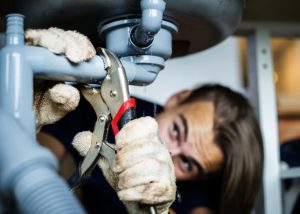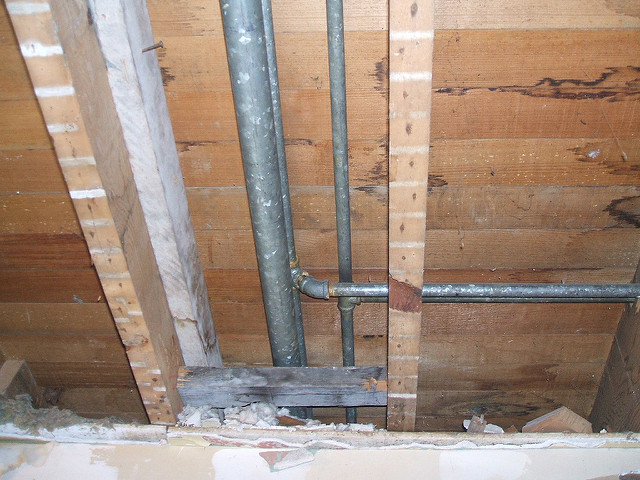Detecting Secret Water Line Leaks: Six Useful Detection Methods
Detecting Secret Water Line Leaks: Six Useful Detection Methods
Blog Article
They are making several good observations related to Leaking water lines as a whole in this post further down.

Early detection of dripping water lines can alleviate a potential calamity. Some small water leaks might not be visible.
1. Examine the Water Meter
Every house has a water meter. Inspecting it is a surefire manner in which aids you find leakages. For beginners, switch off all the water sources. Guarantee no one will certainly flush, make use of the faucet, shower, run the cleaning device or dishwasher. From there, most likely to the meter and watch if it will change. Because no one is using it, there need to be no activities. If it relocates, that shows a fast-moving leak. Also, if you discover no changes, wait a hr or more and examine back once more. This implies you may have a slow-moving leakage that might even be below ground.
2. Check Water Usage
If you detect abrupt adjustments, in spite of your usage being the exact same, it indicates that you have leaks in your plumbing system. An abrupt spike in your costs shows a fast-moving leakage.
A consistent rise every month, also with the exact same routines, shows you have a sluggish leakage that's also gradually intensifying. Call a plumber to extensively examine your property, especially if you feel a warm area on your floor with piping beneath.
3. Do a Food Coloring Examination
When it pertains to water consumption, 30% comes from commodes. Examination to see if they are running appropriately. Drop flecks of food color in the storage tank and wait 10 minutes. There's a leakage in between the container and also dish if the shade somehow infiltrates your dish during that time without flushing.
4. Asses Outside Lines
Do not fail to remember to check your outdoor water lines also. Needs to water permeate out of the link, you have a loose rubber gasket. One tiny leakage can throw away bunches of water and also surge your water bill.
5. Assess the scenario as well as check
Home owners need to make it a behavior to inspect under the sink counters and even inside closets for any kind of bad odor or mold and mildew development. These two red flags indicate a leak so punctual interest is required. Doing routine evaluations, also bi-annually, can save you from a significant trouble.
Check for discolorations and also deteriorating as many pipelines and home appliances have a life expectations. If you believe leaking water lines in your plumbing system, don't wait for it to escalate.
Early detection of leaking water lines can reduce a prospective catastrophe. Some little water leakages may not be visible. Inspecting it is a guaranteed means that aids you uncover leakages. One tiny leak can squander lots of water and also increase your water bill.
If you presume dripping water lines in your plumbing system, don't wait for it to rise.
WARNING SIGNS OF WATER LEAKAGE BEHIND THE WALL
PERSISTENT MUSTY ODORS
As water slowly drips from a leaky pipe inside the wall, flooring and sheetrock stay damp and develop an odor similar to wet cardboard. It generates a musty smell that can help you find hidden leaks.
MOLD IN UNUSUAL AREAS
Mold usually grows in wet areas like kitchens, baths and laundry rooms. If you spot the stuff on walls or baseboards in other rooms of the house, it’s a good indicator of undetected water leaks.
STAINS THAT GROW
When mold thrives around a leaky pipe, it sometimes takes hold on the inside surface of the affected wall. A growing stain on otherwise clean sheetrock is often your sign of a hidden plumbing problem.
PEELING OR BUBBLING WALLPAPER / PAINT
This clue is easy to miss in rooms that don’t get much use. When you see wallpaper separating along seams or paint bubbling or flaking off the wall, blame sheetrock that stays wet because of an undetected leak.
BUCKLED CEILINGS AND STAINED FLOORS
If ceilings or floors in bathrooms, kitchens or laundry areas develop structural problems, don’t rule out constant damp inside the walls. Wet sheetrock can affect adjacent framing, flooring and ceilings.
https://www.servicemasterbyzaba.com/blog/how-to-detect-water-leakage-in-walls/

We had been made aware of that article about Detecting hidden plumbing leaks from an acquaintance on another blog. Feel free to take the opportunity to distribute this post if you enjoyed reading it. Thanks for going through it.
Get Offer Report this page